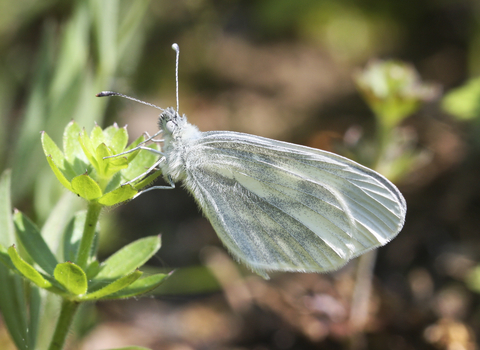
Wood white © Frank Porch
Wood white
This dainty white butterfly is now only found in a few parts of Britain, where it flutters slowly through woodland clearings.
Scientific name
Leptidea sinapisWhen to see
Adults: May to AugustTop facts
Category
Stats
Wingspan: 42mmUK BAP: Priority Species. Section 41 species of principal importance under the NERC Act in England. Listed on Section 7 of the Environment (Wales) Act 2016. Protected in the UK under the Wildlife and Countryside Act, 1981.
About
The wood white is the smallest of our white butterflies, with a distinctive slow and fluttering flight. These dainty insects are found in sheltered areas of woodland rides and glades, or sometimes around scrubby areas, rough grassland, or coastal undercliffs. They emerge in May and can be seen until June or July. There can also be a second brood of butterflies that emerges later in the summer, flying throughout August.Wood whites are particularly active on still, sunny days. They visit a variety of flowers to feed on nectar, including knapweeds, bird's-foot-trefoils, and bugle. They always rest with their wings closed. Males spend a lot of their time patrolling in search of a mate. They have a delightful courtship display, in which the male and female face each other and take turns flashing open their wings. At the same time, the male will stick out his proboscis and wave his head and white-tipped antennae from side to side.
Females lay their eggs singly on the leaves of the foodplant. The caterpillars eat a range of plants including bitter-vetch, common bird's-foot-trefoil, meadow vetchling and tufted vetch. When they're fully fed they wander away from the foodplant and pupate in grass or scrub, spending the winter as a pupa.
Wood whites used to be found across England and into Wales, but since the 1970s their range has shrunk by more than 80%, according to 'The State of the UK's Butterflies 2015'. They are now almost completely restricted to the south and centre of England. They form colonies that can include a large number of butterflies in a small area.
